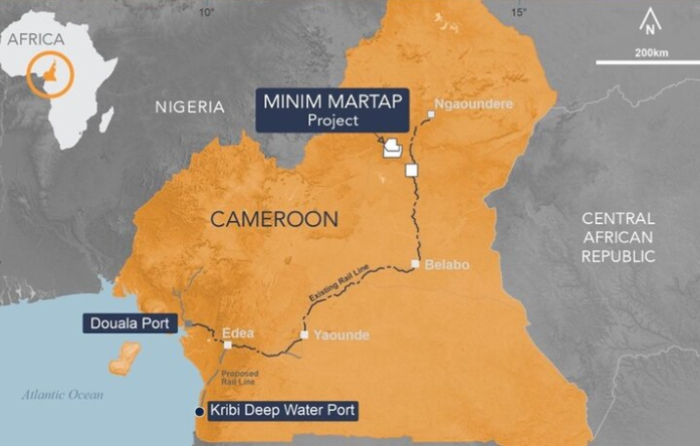Canyon Resources progresses towards Minim Martap Bauxite Project PFS

Canyon Resources Ltd (ASX:CAY) is on track to deliver the pre-feasibility study for its Minim Martap Bauxite Project in Cameroon, Africa, in the near future.
The company completed a scoping study in November 2019 which supports a two-stage, two-port development strategy for the project.
This involves exporting bauxite through the Douala port as a stage-1 standalone project, with a higher output planned for stage-2, which would use the Kribi deep-water port.
Stage one export[hhmc]
The first stage will use existing rail and Doula port infrastructure, with no rail line upgrades needed to transport ore from the Minim Martap project area.
Douala Port connects directly to the current rail line and there are no other bulk tonnage projects along the rail route competing for access.
Additionally, there are opportunities to transship from Douala to larger ships offshore.
The company is confident that using existing infrastructure could prove a profitable avenue for the 3 million tonnes per annum expected during stage one production.
Stage two infrastructure[hhmc]
The second stage will use the Kribi Port, the only deepwater port in Central West Africa, to unlock higher export volumes and lower operating costs.
The inner harbour has a depth of 16 metres draught which provides capacity for up to post panamax direct ship loading and with near-shore outer harbour depths of over 20 metres, there is potential for direct ship loading to Cape Class vessels.
The port surrounds are also underutilised and area is available nearby for bauxite stockpiles.
While existing, available and operational rail and port infrastructure provides a fast pathway to market, the use of the Kribi Port will require a 130-kilometre rail link to the existing rail line.
Project locations relative to existing infrastructure
Potential resource upside[hhmc]
The JORC 2012-compliant mineral resource estimate is 892 million tonnes at 45.1% aluminium oxide and 2.8% silicon dioxide, representing a tier-1, very high-grade, low silica resource, and includes:
- Very high-grade zone of 431 million tonnes at 48.8% aluminium oxide and 2.6% silicon dioxide (total); and
- Strategic mine scheduling shows 50% aluminium oxide and less than 2% silicon dioxide from within the high-grade zone.
Minim Martap has the same high-grade, low contaminant bauxite as the largest high-grade deposits in Guinea and is the only Guinea-style deposit of this scale and grade outside of Guinea.
Canyon believes the project will provide an alternative to Guinea bauxite supply reliance.
Global bauxite market[hhmc]
With approximately 50% of all global seaborne bauxite being exported from Guinea, and more than half of Chinas bauxite imports also coming from Guinea, the company believes that major alumina producers are now considering Cameroon bauxite from Minim Martap as a geopolitical hedge and a means of diversifying the concentration of supply of the West African very high-grade bauxite and reliance on one country.
Key factors behind the growing demand globally for high-grade product include;
- The seaborne bauxite market has grown by 255% since 2010 and forecast to continue to grow;
- Traditional mines located next to refineries are depleting higher grade bauxite supplies;
- Refiners globally are sourcing and importing high grade, lowRead More – Source
[contf]
[contfnew]

Proactiveinvestors
[contfnewc]
[contfnewc]




